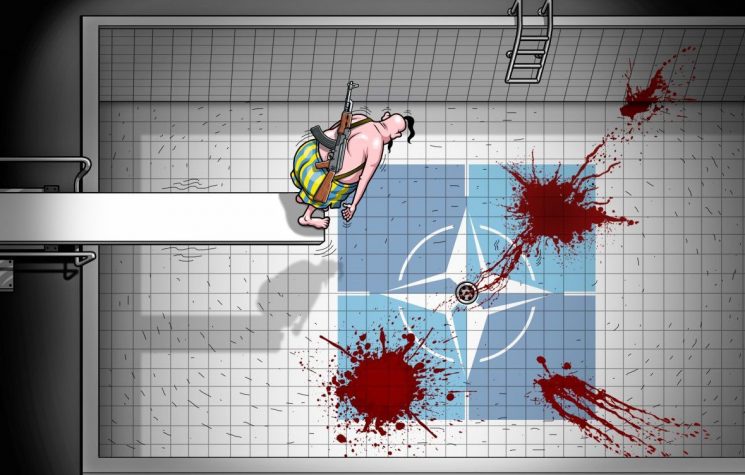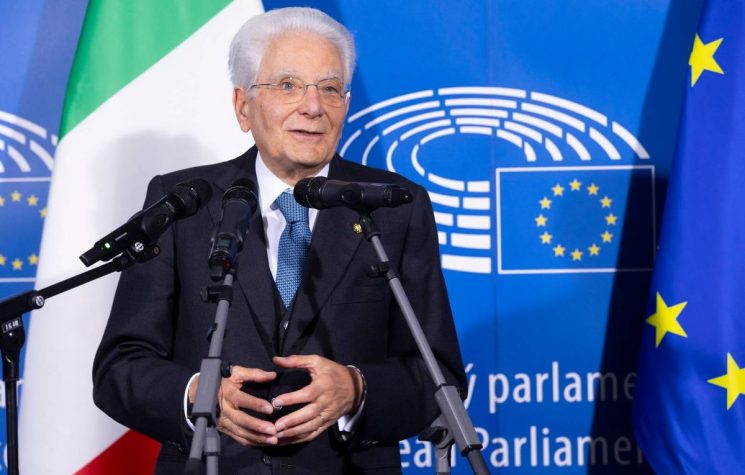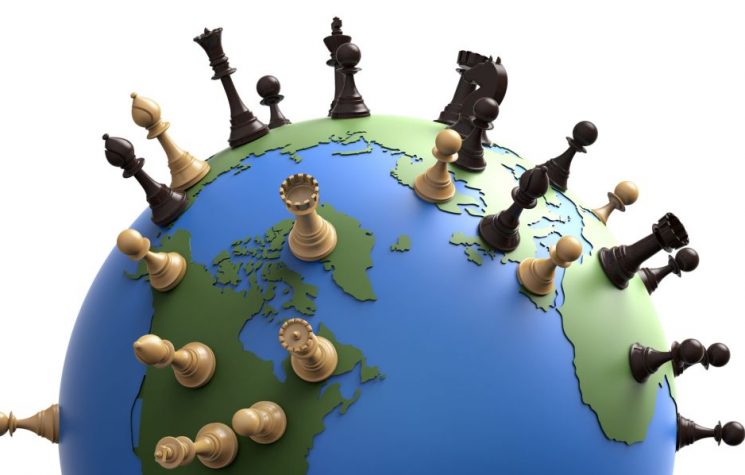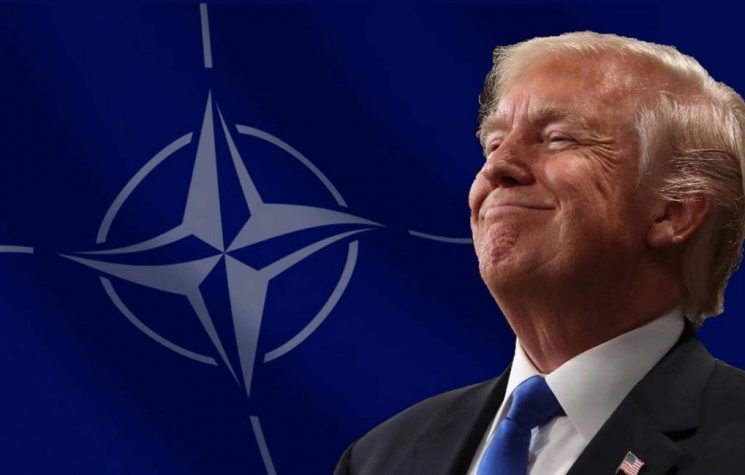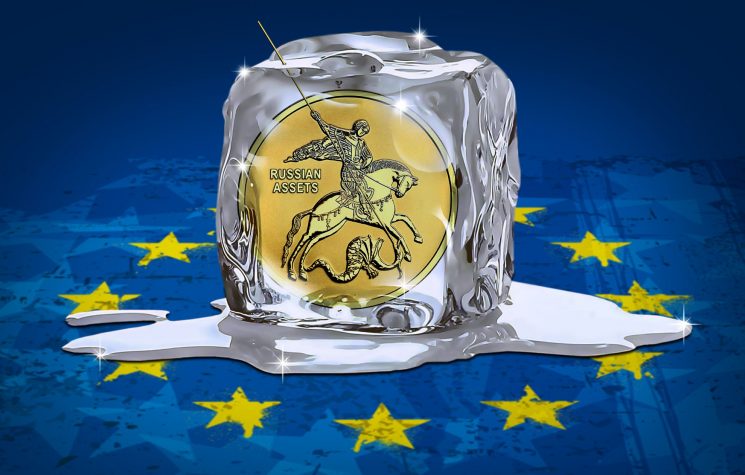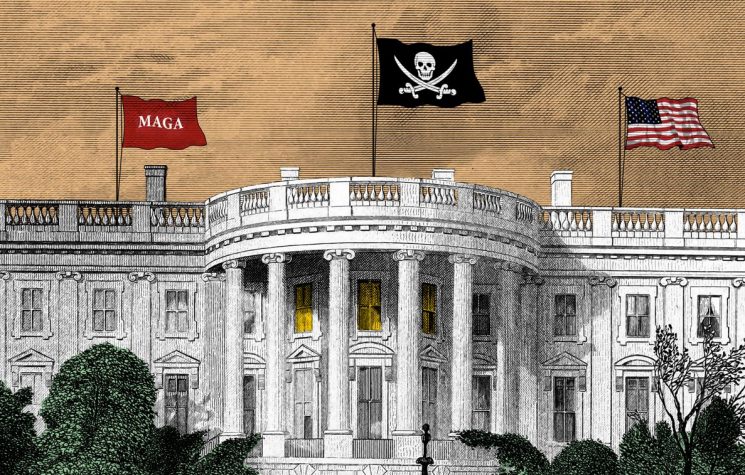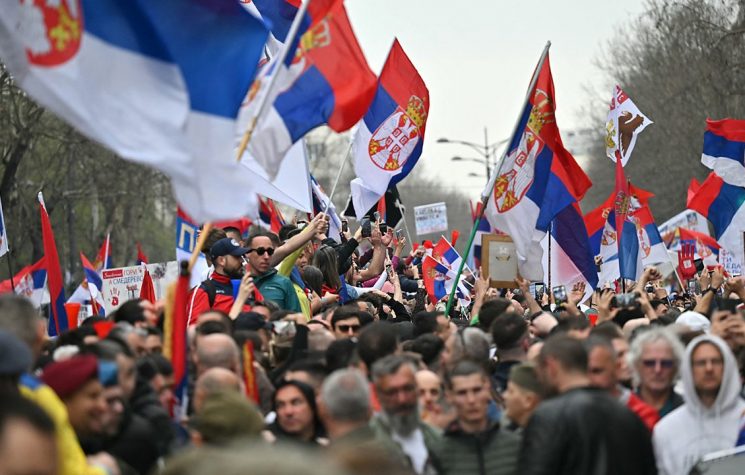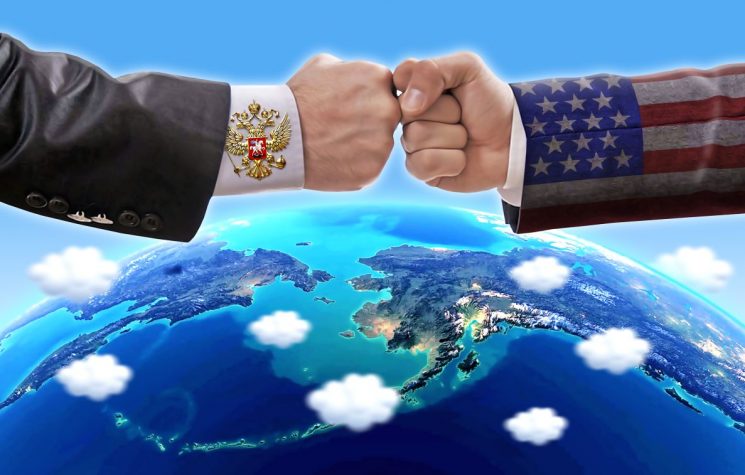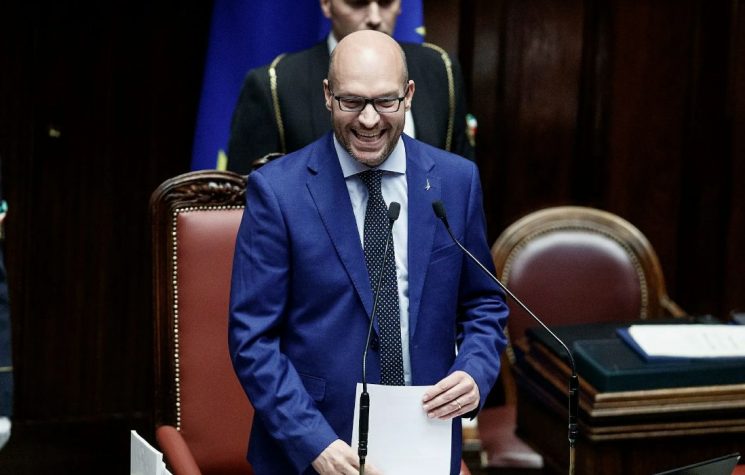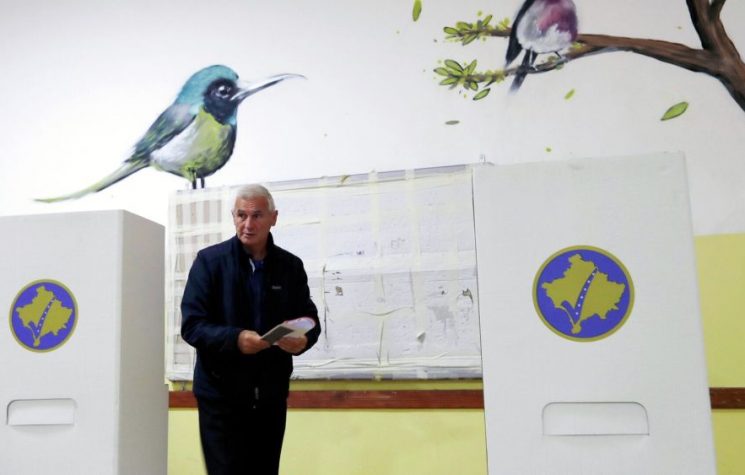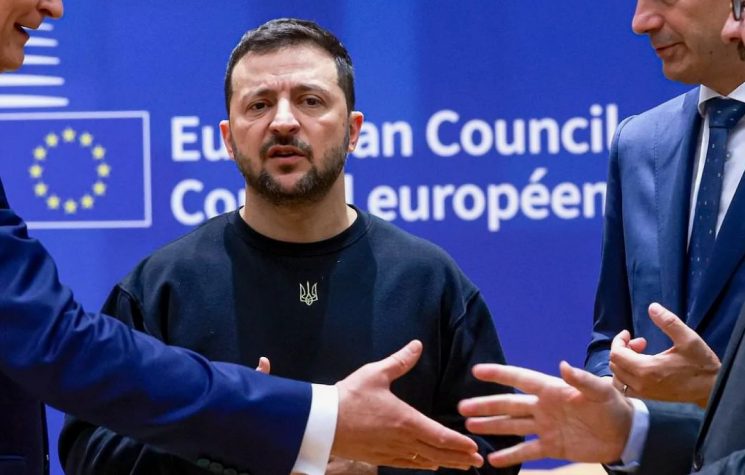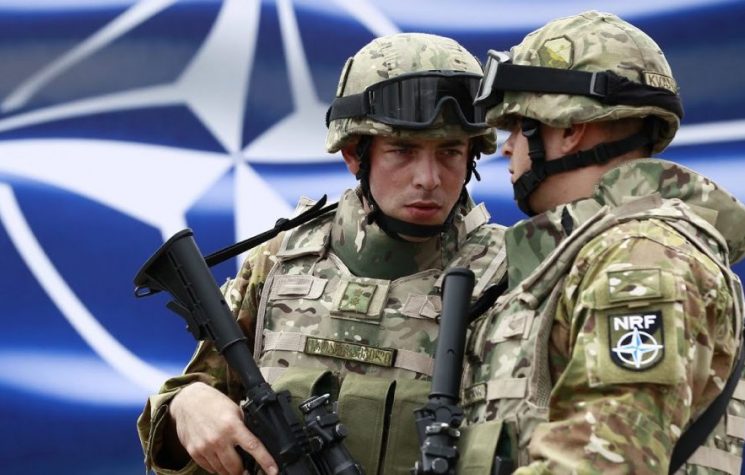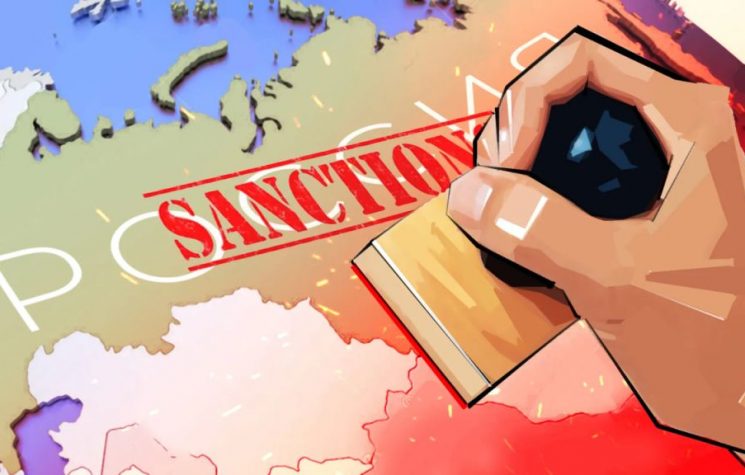To answer this question, bearing in mind the subject of the closed-door meeting, a few words are enough: the next theatre of war.
Contact us: info@strategic-culture.su
A few days ago, a secret meeting was held in Trieste, attended by authorities of various kinds: members of NATO, members of the Atlantic Council, members of the Hungarian think tank Danube linked to Viktor Orbán, members of Donald Trump’s entourage, members of the Italian Armed Forces and Police force, representatives of the city government and representatives of the local Freemasonry. You will not find this information elsewhere. The topic of the meeting was the militarisation of the port of Trieste. Which is the reason?
The strategic role of Trieste in the Trimarium doctrine
The year was 1942: a book destined to become a cornerstone of American maritime strategic science was published in the United States of America. It was entitled America’s Strategy in World Politics and was written by the academic geographer Nicholas John Spykman, one of the fathers of maritime geopolitics and a spiritual pupil of Sir Halford Mackinder. Apparently, the book in question was not a success with the general public, while it became a veritable bible of ‘sea route’ strategy for all powerful thalassocrats, introducing the Rimland concept that we use in geopolitics today.
There is a small chapter in the text devoted to a particular topic: the Trimarium doctrine, today better known by its modernized name of Three Seas Initiative (3SI or TSI). It is a strategy that will become the golden rule for maintaining American power on the continent of Europe. The 3SI, also known as the Baltic, Adriatic and Black Sea doctrine, is today regarded as a strategic initiative in which 13 member states participate, namely Austria, Bulgaria, Croatia, the Czech Republic, Estonia, Hungary, Lithuania, Latvia, Poland, Romania, Slovakia and Slovenia, plus 2 de facto added states that are Moldova and Ukraine, and was officially launched as a project in 2015 by Polish President Andrzej Duda and Croatian President Kolinda Grabar-Kitarovič under the careful coordination of the U.S. State Department.
A coincidence? Definitely not.
When the Americans came to Europe during WWII, having no intention of simply taking a summer holiday but rather of staying and establishing a lasting power, they had to devise a way to keep the continent under control, not only militarily – which they succeeded in doing thanks to the huge number of American military bases spread over all European countries – but also financially and commercially, as well as politically. At that time, Europe was in a phase of division between East and West, between Atlantic and Soviet influence. Central Europe or, more precisely, Mitteleurope, was the geographical fulcrum on which to establish the exercise of this power. A way had to be found to control the continent in a stable and lasting manner, a need that had become pressing at the end of the First World War and with the disintegration of the Habsburg Empire, a veritable geopolitical buffer that had cushioned not a few frictions and claims between Russians, Ottomans and Germans. The political geography that had taken shape with the 14 points of Woodrow Wilson’s programme was not enough to guarantee governability. Even Winston Churchill was well aware of the need for a solid bloc that was impenetrable by the powers to the east.
The idea was therefore launched, in agreement between Churchill and the successor Franklin Delano Roosevelt, to find a geo-economic solution: With the help of three Federal Clubs, the Club of London, the Club of Paris and the Club of Rome, the Intermarium Charter was published in 1945, a document based on the theorizations of the American Spykman, which proposed the union of all the peoples from the lower Adriatic Sea (Aegean Sea in particular) to the North European Seas, with the conviction that stability in the region was of paramount importance for lasting peace throughout Europe.
In particular, it was necessary to hold in check a number of ports of enormous importance, such as Hamburg in Germany and Constance in Romania, and the port of Trieste in particular. Since then, the Trimarium doctrine has been pursued with consistency and determination, through various multilateral international agreements involving trade routes, banking institutions, investment funds and the strategic sector. All this was facilitated by the collapse of the USSR, which meant a significant weakening of the political entities of the countries involved in the heart of Eastern Europe.
If we think about it, the Trimarium geographically creates a kind of triangle in the East, running close to the border with the Russian Federation. Exactly what NATO has been doing for 75 years, namely expanding eastwards to provoke and attack Russia. The practice has been consistent with the doctrine. In fact, it’s an instrument of control for the entire Balkan macro-region, which is the subject of speculation, military missions and constant political and social problems, deliberately kept under check and instability.
The new name of Three Seas Initiative does not change the strategic geometry of the old Trimarium: the ports involved have been increased and the American military presence has been implemented in the areas of interest, among which the most important and continuously under U.S. attention is still Trieste. How come?
The Free Port of Trieste and the Free Territory of Trieste
Not many people are familiar with the legal status of Trieste, which is indeed singular and deserving of in-depth study (which we will not carry out in this article, perhaps later). After WWII, the Triestine area was designated to be a free space that was to guarantee a balance of power between the contending Powers, as a demilitarized and neutral space, endowed with an autonomous government and coexistence between the various ethnic groups present. In 1947, the Treaty of Paris was signed, in which peace was established and divisions of influence between the victorious and defeated countries were allocated. With the 16th resolution, the Free Territory of Trieste (Territorio Libero di Trieste – TLT) was established. In 1954 the London Memorandum entrusted the provisional civil administration of Zone A to Italy and Zone B to Yugoslavia. In 1975, however, with the Treaty of Osimo, Italy and Yugoslavia established a border between territories they did not own, violating the autonomy of the TLT and the Treaty of Paris. With the collapse of Yugoslavia and the subsequent division of the land into several states, the TLT found itself divided between three countries – Italy, Slovenia and Croatia – which occupied it illegitimately, violating previous treaties and triggering disputes, political and judicial struggles, scandals and protests that continue to this day.
What is most interesting is the Italian approach. Trieste is placed under administrative and military occupation, as there are possibly armed and police forces of the Italian Republic … and American, as Italy is a colony of the USA under military occupation, as evidenced by the more than 120 U.S. bases all over the territory. Precisely in Trieste, the Americans have placed the UN intelligence school and a special police control, including the Eurogendfor, which keeps not only the city but also the trade routes under persistent military control.
The port of Trieste, which is supposed to be an international free port, is the port par excellence that allows Mitteleuropa access to the Mediterranean Sea, which opens to the East and Africa, with a 73% convenience compared to other European ports. Its location is strategic in every respect. That is why the Americans wanted to take control of it to implement the Trimarium doctrine. To govern Trieste and its port is to govern Southern and Eastern Europe. From Trieste to the Baltic, a straight line is created that defines an imaginary ‘iron curtain’, but also a north-south corridor in terms of gas and oil pipelines, overland trade routes and the unique military administration of territories.
All this violates the sovereignty of the TLT and the international agreements by which it was established, committing a double act of violence.
In the meantime, China and Russia have also intervened in Trieste, the former with important investments, heavily slowed down with Italy’s demotion from the Silky Way in the spring of 2024, the latter already present since the Soviet period and now, after years of investments, blocked due to European sanctions from 2022.
The Cotton Way passes through Trieste
Let us return to the secret meeting a few days ago. The topic was the militarization of the port, which is already under de facto military control, but which would be totally put under siege when Italy starts the Via del Cotone – The Cotton Way. This is an alternative trade route from the Silk Road, realized through a partnership between the USA, India, Saudi Arabia, the Arab Emirates, Israel, Jordan, and the European Union, consisting of two links, one rail and one port, with funds from the Global Infrastructure and Investment created by the G7 in 2002 and the European Union’s Global Gateway. The aim is to compete with China and, in general, the Eurasian partnerships and the BRICS+, from which European countries are excluded by virtue of Anglo-American subjugation.
In this economic corridor between India, the Middle East and Europe, Italy will participate by virtue of the memorandum signed in September 2023 precisely through the port of Trieste.
It is a pity that the geopolitical situation in Europe – not to mention the economic situation, which is totally disastrous for all states on the continent – is not exactly favourable: the Russian-Ukrainian conflict is lasting longer than NATO had foreseen and this is causing great instability within the very Trimarium triangle – where Ukraine has been added in 2023, under the pretext of strengthening its military independence -; the situation in the Middle East is an epoch-making disaster; the war economy has not favored the recovery of European countries, on the contrary, it has thrown them one after the other into a long winter of inflation; international support has failed with the advent of an eastern-led multipolar world, crumbling day after day, agreement after agreement, the American hegemony throughout the world.
What to do with the Trimarium and Trieste then?
The militarization of an international free port appears to be a well-conceived provocation. In violation of international law and with the overbearing use of force, the Atlantic bloc wants to raise its voice against Russia and China, trying to limit their interests in the occupied territories. But even more likely, what they are trying to do is to consolidate that ‘iron curtain’ from the Mediterranean to the North Seas, so that they can manage (or almost manage) the eventual geographical misalignment of the Russian-Ukrainian conflict.
Let us try to imagine the following scenario: Ukraine falls, NATO and its proxy known as the European Union, forced to fight a suicidal proxy war, do not let go and agree to extend the conflict into the heart of Europe. Where would they go to fight? Taking a conventional conflict approach as valid, the most optimal territories would be Poland and Germany, via Hungary. Reaching as far as Germany already, however, would mean collapsing the Deutsche Bank, in terrible crisis yet, which is the primary source of money flow for the European Central Bank, and this is unacceptable because it would implode the EU political system and the Euro as a currency, with disastrous consequences for the already battered dollar. We must therefore repel the enemy and keep it beyond a certain border. From Trieste to the North, therefore, by clamping down on Mitteleuropa with the help of Moldavia and Romania, it is possible to establish a circumscribed and manageable theatre of battle, one that has already been dense with NATO military presence for decades and has been steadily increasing in recent years, with exercises and war schools in Poland, Hungary, Bulgaria and Romania that are preparing soldiers for the clash with Russia. Bear in mind that Croatia has reintroduced compulsory conscription and that Italy will soon do so, as has already been under discussion in Parliament for months.
What on earth is happening in Trieste? To answer this question, bearing in mind the subject of the closed-door meeting, a few words are enough: the next theatre of war.
And they certainly won’t come asking us for permission to start it.








